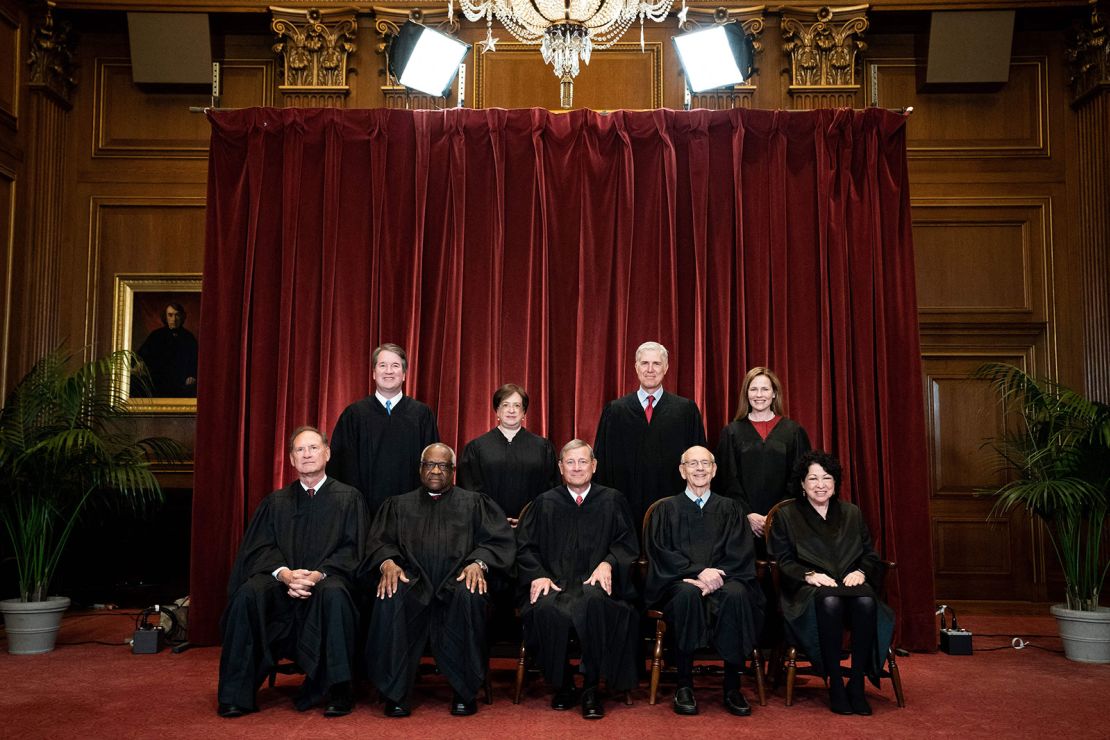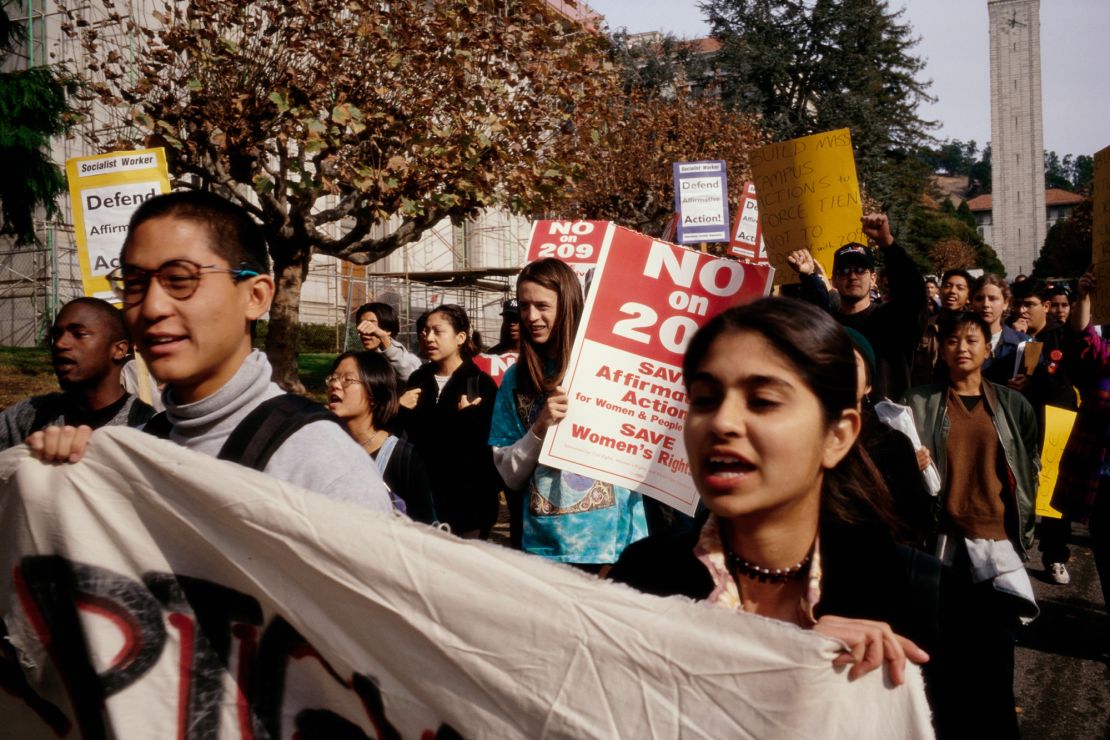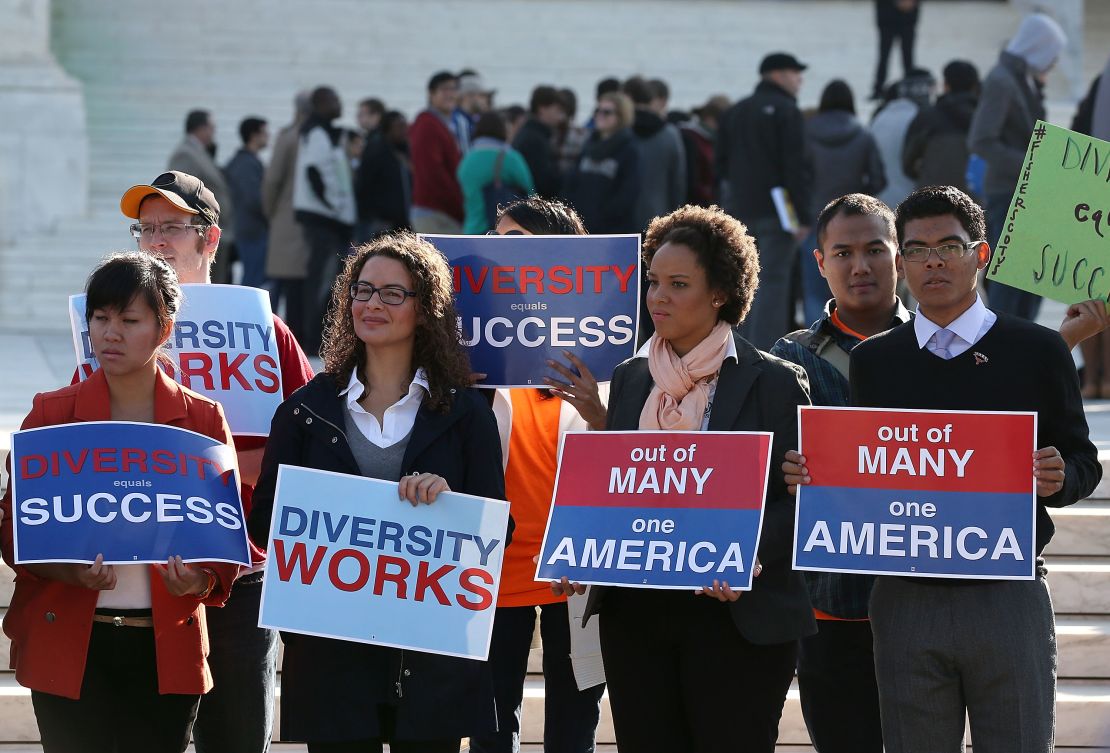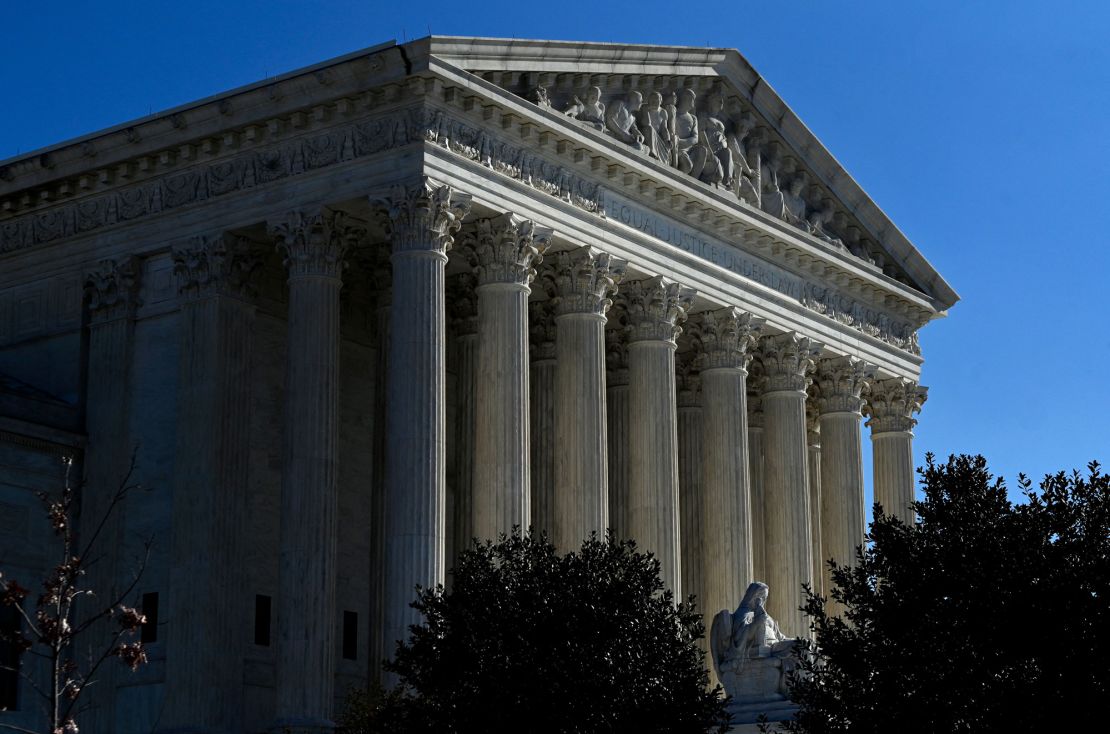A Supreme Court justice is appointed for life, is virtually impossible to impeach and has the “unbridled” ability to nullify any law through the power of judicial review.
It’s that power that affirmative action supporters dread now that the high court has decided to consider the use of race in college admissions. They fear the conservative majority on the court will undo more than 50 years of racial progress in higher education, and the ripple effects could cause American institutions to backtrack on efforts to become more diverse.
But there is another perspective that says that the legal power of the Supreme Court cannot withstand an even more formidable power:
The will of the American people.
That perspective insists that it ultimately won’t matter what conservatives on the Supreme Court decide on affirmative action.
A decision banning the use of race in college admissions could cause minority enrollment in higher education to plummet, but colleges will adapt. And so will the rest of America because concepts such as diversity and inclusion are too widely accepted now to be erased, some scholars and diversity consultants say.
“Society is moving in the direction of diversity and inclusion, and there is no turning back,” says Barry Friedman, author of “The Will of the People: How Public Opinion Has Influenced the Supreme Court and Shaped the Meaning of the Constitution.”
“The ultimate check on the Supreme Court is popular will.”
Why critics dislike affirmative action
The issue of affirmative action in higher education may turn out to be the ultimate test of Friedman’s optimism. After years of conservative legal attacks, it has become the legal equivalent of a dead man walking – it’s operating on borrowed time.
Read more from John Blake:
Affirmative action has been under attack since political leaders introduced it in the mid-1960s to improve educational and employment opportunities for racial minorities. It was instituted in part to compensate for centuries of slavery and segregation.
“A society that has done something special against the Negro for hundreds of years must now do something special for the Negro,” the Rev. Martin Luther King Jr. wrote in his final book, “Where Do We Go From Here: Chaos or Community.”
Affirmative action didn’t just help Black people. It expanded educational and job opportunities for other groups like women and persons with disabilities. Some studies say affirmative action has helped White women more than any other group.
The battle over affirmative action in higher education is part of a larger legal struggle. The contemporary conservative legal movement was formed in part to strike down anti-discrimination laws and race-conscious policies designed to promote diversity.
That movement says dividing people up by race is unconstitutional, that the Constitution is “colorblind” and that all Americans should be treated as individuals, not as members of a racial or ethnic group.

A Gallup Poll last year found that 62% of Americans “generally “support affirmative action. But nearly three-quarters of Americans in a 2019 Pew Research Center survey said colleges and universities should not consider race or ethnicity in student admissions.
The broad opposition fell across racial and political lines: 62% of Blacks and 63% of those that either “lean” or identify as Democrats said race should not be a factor along with 78% of Whites holding the same views.
Affirmative action in higher education survived a near-death experience in 2016 when former Justice Anthony Kennedy cast a surprising vote upholding the University of Texas’ race-based admissions plan.
The makeup of the high court, however, has since become more conservative. Justices announced last month that they will reconsider race-based affirmative action in college admissions. The case in question challenges policies at Harvard and the University of North Carolina that use students’ race among many criteria to decide who should gain a coveted place in an entering class.
The issue also is part of a larger debate over diversity and inclusion in the US that impact all sectors, including corporations, the military, and even the National Football League.
Former Miami Dolphins coach Brian Flores filed a class action lawsuit against the NFL and three of its teams earlier this month. He accused the league and teams of systemic racism in hiring practices for head coaches after he was fired as the Dolphins’ head coach despite a winning record. About 70% of NFL players are Black; currently only two of its 32 head coaches are Black.
The NFL said that Flores’ lawsuit was “without merit” and that “diversity is core to everything we do.” And the Dolphins “vehemently” denied the allegations, saying they are “proud” of the inclusion in their organization.

Affirmative action has even factored in recent discussions over the nominating process for Supreme Court justices. On Friday President Joe Biden selected federal appellate court judge Ketanji Brown Jackson, who is African American, as his nominee to the high court.
GOP Sen. Ted Cruz has called Biden’s promise to nominate the first Black woman to the Supreme Court “offensive” and an “insult,” while Republican Sen. Roger Wicker said a Black woman high court nominee would be the “beneficiary” of an affirmative action quota.
There is, however, precedent for presidential candidates making specific promises for potential appointees, such as Reagan’s promise to place a woman on the Supreme Court.
Why some form of affirmative action is here to stay
Despite the constant attacks against affirmative action, though, some say the concept is here to stay.
Some scholars say colleges can adapt to a Supreme Court ruling eliminating race in college admissions by shifting the focus to income.
One of the biggest proponents of this approach is Richard Kahlenberg, a senior fellow at the Century Foundation, a progressive independent think tank. He says that giving a leg up to economically disadvantaged students of all races would benefit people of color because they make up a disproportionate share of the poor.
It’s good politics, too, he says.

An economic version of affirmative action is fairer and more appealing – and would not be so easily used as a wedge issue between Blacks and Whites, he says. He points to a 2016 Gallup poll which said that 61% of Americans favor a college considering a family’s economic circumstances when making admissions decisions.
“The notion that the poor of all races have a special claim is a fundamental tenet of most of the world’s great religions,” Kahlenberg wrote in a 2018 essay. “This is consistent with social science research which finds that today, being economically disadvantaged in America poses seven times as large an obstacle to high student achievement as does race.”
Keeping affirmative action alive is also good business, diversity consultants say.
A conservative majority on the high court can’t eliminate a growing recognition that the country needs an educated and diverse workforce to remain competitive, they say.
This recognition is driven by demographic changes. The US Census’ 2020 report revealed that people who identify as White alone declined for the first time since the Census began in 1790 and that the majority of Americans under 18 are now people of color.
Howard Ross, a diversity consultant and social justice advocate, says corporate America and institutions like the military won’t retreat from diversity efforts because they realize it’s good for their bottom line. They are driven by what he calls “enlightened self-interest.”
“People are realizing that there is an enormous amount of talent out there that’s being underutilized and that companies and leadership that reflect their customer base perform better in the stock market,” Ross says.
To reach a more diverse customer base, companies increasingly understand they must hire diverse workers who know how to reach those customers and make them feel welcome.

Corporate diversity makes dollars and sense, says Ross, author of “Everyday Bias: Identifying and Navigating Unconscious Judgements in Our Daily Lives.”
“When you go into a store and you see people like yourself, you feel more comfortable, and a greater sense of belonging, and you feel they may understand your needs,” Ross says. “That’s something that may be the difference between you buying a product at that store versus another one.”
And Supreme Court scholars cite another point: The court can try to remake society, but it can’t enforce its own rulings.
For example, the court declared in 1962 that prayer in school was unconstitutional, “but in many schools people kept praying,” Friedman says.
“The Supreme Court hands down decisions, but when they say everybody has to change their behavior, it’s almost impossible for them to get compliance.”
Why some say the court could derail social progress
But there are others who say a high court ruling against affirmative action in higher education will be devastating in both the short term and the long term.
In the short term, minority enrollment will probably plummet at some colleges if history is a guide. In 1996, California voters passed Proposition 209, which banned the use of what it called “preferential treatment” on the basis of things like race and sex in public educational settings and public sector jobs.
The ban hurt Black college applicants. From 1995 to 1998, admission offers to Black applicants at UCLA and the University of California, Berkeley, fell by 55%, according to one estimate. One UCLA faculty member told The New Yorker that his school ended up “looking more like Ole Miss.”
In 2020, California voters rejected Proposition 16, which would have restored the use of race and gender in public college admissions.
In the long term, economic affirmative action is not enough to help applicants of color, others say.
They point to research that shows that a focus on income alone in college admissions does not help students of color as much as other approaches that explicitly use race. This is an area of dispute among those who support affirmative action. But there is some evidence that racial diversity falls at colleges when income is used as a substitute for race in admissions decisions.

And who says the high court can’t defy popular will? They do it all the time, says Gerald N. Rosenberg, author of “The Hollow Hope: Can Courts Bring About Social Change?”
Rosenberg cites the movement to abolish child labor in the late 19th and early 20th century. It had sympathetic victims. Smudge-faced and barefoot children were routinely employed as workers in dangerous factories, where their smaller size could help them do certain tasks and their age made them more unlikely to strike.
Activists successfully persuaded the public to turn against child labor through photo exposes, pamphlets, and mass mailings. They even forced the US Congress to act.
But the Supreme Court didn’t care, Rosenberg says.
“There was a majority support to abolish child labor,” he says. The Congress passed two separate bills using two different constitutional law hours to abolish child labor. The court invalidated both those laws, postponing the end of child labor for a generation.”
The Supreme Court is insulated against social pressure to change because the nation’s political system is also designed to deflect majority will, Rosenberg says. That’s because America’s Founding Fathers created a government that was built to resist “pure democracy,” such as the direct election of presidents, he says. They feared too much democracy would degenerate into “mobs” and “factions.”
The Constitution dictates, for example, that every state gets two senators, no matter how small the state’s population. And as we saw with Donald Trump in 2016, it allows that a presidential candidate can lose the popular vote but still become president through the electoral college.
Any optimism about the will of the people being stronger than the high court doesn’t consider the gridlock of our politics, Rosenberg says. What chance is there for Congress to pass a law overruling a high court decision when Congress barely functions?
“If we had a political system in which majority views were pretty closely translated that optimism would be well-taken,” he says. “But we don’t have that system.”
Why 2023 will bring an answer to a key question
There are other signs that the current makeup of the Supreme Court is well-suited to ignoring popular will.
The court’s conservative bloc has already moved aggressively towards overturning Roe v. Wade, despite polls showing a majority of Americans believe that abortion should be legal in all or most cases.
Those who think the popular will can supplant the high court forget their history: The Supreme Court’s traditional role has been to block political and social change, not validate it, scholars like Rosenberg say.
The high court has historically listened to one demographic above all: the wealthy, the powerful and the privileged, court critics say.
“I always say don’t underestimate the ability of the status quo to continue,” Rosenberg says.
The high court is expected to deliver their final say on affirmative action in higher education by June of 2023.
If the conservative bloc on the high court rules as expected, the aftershocks could ripple into other segments of a rapidly diversifying American society where buzzwords like diversity and inclusion are now taken for granted as facts of life.
We will then learn what is stronger:
The will of the Supreme court or the will of the people.




